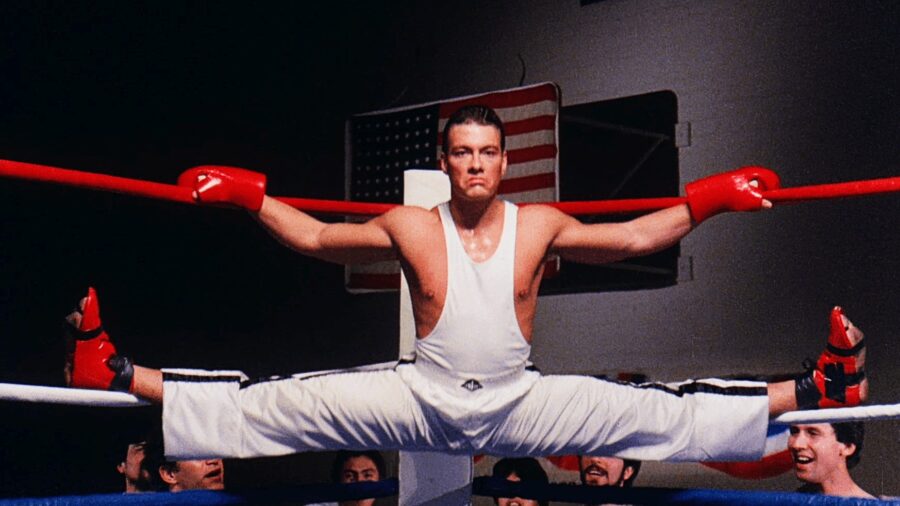
Jean-Claude Van Damme: The Early Years of a Martial Arts Maverick
BJean-Claude Van Damme: 7 Day Workout Routine – born on October 18, 1960, in Sint-Agatha-Berchem, Brussels, Belgium, Jean-Claude Camille François Van Varenberg, known to the world as Jean-Claude Van Damme, emerged from modest beginnings to become a global icon in the realms of martial arts and action cinema.
Formative Years in Belgium
Growing up in the ethnically diverse neighborhoods of Brussels, Van Damme, from a young age, showed a keen interest in martial arts. Initially, he began training in Shotokan karate, a discipline that laid the foundation for his later success. However, his journey wasn’t without its challenges. Van Damme struggled with dyslexia, and the traditional education system didn’t align with his unique learning style.
Early Passion for Martial Arts
Van Damme’s devotion to martial arts intensified as he delved into various disciplines, including kickboxing and Muay Thai. His commitment and skill quickly earned him recognition in local competitions, setting the stage for a promising martial arts career.
Move to the United States
In pursuit of his Hollywood dreams, Van Damme relocated to the United States in the early 1980s. Despite initial struggles, he managed to land a job as a bouncer, showcasing his physical prowess and martial arts skills. This led to an opportunity to work as a bodyguard for notable personalities, including the legendary actor Chuck Norris.
Breakthrough in Hollywood
Van Damme’s breakthrough came with his role in the film “Bloodsport” (1988), a martial arts classic that showcased his exceptional fighting abilities. This marked the beginning of a prolific career in action cinema. He continued to star in a string of successful films such as “Kickboxer” (1989), “Universal Soldier” (1992), and “Timecop” (1994), earning him the nickname “The Muscles from Brussels.”
The Birth of a Signature Move: It was during the filming of “Bloodsport” in 1988 that he unveiled a move that would forever be associated with his name—the majestic and awe-inspiring leg split.
The Scene: In “Bloodsport,” Van Damme’s character, Frank Dux, finds himself in a perilous situation—caught in the midst of a fierce and physically demanding martial arts tournament. To showcase his unparalleled flexibility and strength, Van Damme executes the splits, spreading his legs wide while balancing on two elevated surfaces. The camera captures the moment, freezing it in cinematic history.
The Impact: The split became an instant sensation, not just within the martial arts and action movie communities but also among a broader audience. Van Damme’s ability to perform such an extraordinary feat of flexibility set him apart from other action stars, establishing a unique identity that transcended traditional martial arts prowess.
- Physical Mastery: The split highlighted Van Damme’s unparalleled physical prowess. His ability to execute such a demanding and visually striking move without the aid of special effects or stunt doubles emphasized his dedication to his craft and his commitment to pushing the boundaries of what was considered possible in action cinema.
- Symbol of Cool: The split became more than just a physical feat; it became a symbol of cool. Van Damme’s nonchalant demeanor while performing this extraordinary move conveyed an effortless confidence that resonated with audiences. The split was not just a display of physical prowess but a proclamation of his action hero coolness.
- Meme-Worthy Popularity: In the era before social media, the split became a meme before memes were a mainstream phenomenon. The image of Van Damme doing the splits circulated widely, making its way into pop culture references, parodies, and even advertisements, further solidifying its place in the collective consciousness.
Jean-Claude Van Damme’s ability to captivate audiences extended far beyond his martial arts skills. The famous split became a defining moment that propelled him into the realm of action movie legends. It showcased not only his physical abilities but also his charismatic on-screen presence. Today, the split remains a symbol of Van Damme’s enduring impact on action cinema and a testament to the power of a signature move in shaping the legacy of an iconic star.
Challenges and Triumphs
While Van Damme enjoyed success on-screen, his personal life faced its share of challenges, including a well-documented struggle with substance abuse. However, he managed to overcome these obstacles and continued to be a prominent figure in the action film genre.
Legacy and Impact
Jean-Claude Van Damme’s early years laid the groundwork for a remarkable career that transcended borders. His electrifying martial arts skills, combined with charisma and on-screen presence, endeared him to audiences worldwide. Beyond the silver screen, Van Damme’s journey from a young martial artist in Belgium to a Hollywood sensation stands as a testament to resilience, passion, and the pursuit of one’s dreams.
Jean-Claude Van Damme, known for his martial arts skills and action film career, has likely followed something similar to the following:
Jean-Claude Van Damme: 7 Day Workout Routine


Here are some general aspects that could be associated with Jean-Claude Van Damme’s fitness routine based on his background:
- Martial Arts Training:
- Given Van Damme’s background in martial arts, his fitness routine likely includes various forms of martial arts training. This could involve techniques from disciplines such as kickboxing. muay thai and karate.
- Strength and Conditioning:
- Van Damme may engage in strength training exercises to maintain muscle tone and overall strength. His routine may include resistance training and bodyweight exercises.
- Flexibility and Mobility:
- Martial artists often prioritize flexibility and mobility. Van Damme, known for his impressive kicks, likely incorporates stretching and mobility exercises into his routine.
- Cardiovascular Exercise:
- Cardiovascular fitness is important for overall health and stamina. Van Damme’s routine may include cardiovascular exercises such as running, cycling, or high-intensity interval training (HIIT).
- Balanced Diet:
- Maintaining a healthy diet is crucial for overall fitness. Van Damme likely follows a diet that supports his training and provides the necessary nutrients for energy and recovery. He most likely supports his diet with nutritional supplements.
- Mind-Body Connection:
- Martial arts training often emphasizes the mind-body connection. Van Damme’s routine may include mental focus exercises, meditation, or mindfulness practices.
- Variety in Workouts:
- To keep his workouts interesting and challenging, Van Damme may incorporate a variety of exercises and training methods. This could include circuit training, plyometrics, and other dynamic movements.
Jean-Claude Van Damme, known for his martial arts skills and impressive physique, likely followed a well-rounded workout routine to stay in peak condition for his roles in movies and his martial arts pursuits. Keep in mind that individual fitness needs vary, and it’s important to tailor any workout routine to your personal goals and fitness level. Here’s a sample Jean-Claude Van Damme: 7-day workout routine inspired by the kind of training Van Damme might have incorporated:
Day 1: Martial Arts Training
- Warm-up: Jumping jacks, high knees, dynamic stretches
- Martial Arts Techniques: Focus on specific kicks, punches, and defensive maneuvers.
- Bag Work: Practice striking combinations on a heavy bag.
- Sparring: Controlled sparring sessions for application of techniques.
- Core Exercises: Planks, Russian twists, leg raises.
Day 2: Strength Training
- Warm-up: Cardio exercises (running, cycling, or jump rope).
- Compound Movements: Squats, deadlifts, bench press, overhead press.
- Isolation Exercises: Bicep curls, tricep dips, lateral raises.
- Core Strengthening: Weighted sit-ups, oblique crunches.
- Cool Down: Stretching.
Day 3: Cardio and Flexibility
- Cardiovascular Training: Running, cycling, or high-intensity interval training (HIIT).
- Flexibility: Dynamic stretches, yoga, or Pilates.
- Agility Drills: Cone drills, ladder drills.
- Cool Down: Static stretching.
Day 4: Martial Arts and Plyometrics
- Warm-up: Jumping jacks, lunges, dynamic stretches.
- Martial Arts Techniques: Refinement of kicks, punches, and combinations.
- Plyometric Exercises: Box jumps, jump squats, explosive push-ups.
- Speed and Reflex Training: Reaction drills, agility ladder.
- Core Exercises: Planks, bicycle crunches.
Day 5: Active Recovery
- Low-intensity Cardio: Walking, swimming, or light cycling.
- Mobility Work: Foam rolling, yoga, or gentle stretching.
- Light Martial Arts Drills: Shadowboxing or technique practice without high intensity.
- Meditation: Mental relaxation and visualization.
Day 6: High-Intensity Interval Training (HIIT)
- Warm-up: Jump rope, dynamic stretches.
- HIIT Circuit: Intervals of intense exercises (burpees, mountain climbers, sprints) followed by short rest periods.
- Kickboxing Drills: Bag work or shadowboxing with high intensity.
- Core Work: Planks, leg raises, medicine ball twists.
Day 7: Rest or Active Recovery
- Complete rest or engage in low-impact activities like walking or swimming.
- Stretching or Yoga: Gentle stretching to promote recovery.
- Mental Relaxation: Focus on mental well-being through meditation or mindfulness.
Remember to adjust the intensity and volume based on your fitness level, and consult with a fitness professional or healthcare provider before starting any new workout program. Consistency and proper recovery are key components of a successful fitness routine.

It’s important to note that individual fitness routines can vary based on personal preferences, goals, and health considerations. Additionally, the information provided here is based on general knowledge and assumptions about Jean-Claude Van Damme’s background in martial arts and action films.
The following is a Jean-Claude Van Damme: 7 Day Workout Routine, for those wishing to focus on flexibility and learning the split.
Creating a workout routine focused on flexibility, especially for achieving the split, requires a combination of stretching, strength training, and consistency. Remember to warm up before each session and consult with a fitness professional or healthcare provider, especially if you have any pre-existing conditions or injuries.
Day 1: Full Body Stretching
- Dynamic Warm-Up: 10 minutes (light jogging, arm circles, leg swings)
- Full Body Stretching Routine: Include dynamic stretches for all major muscle groups.
Day 2: Lower Body Strength
- Squats: 4 sets x 10-12 reps
- Lunges: 3 sets x 12 reps per leg
- Hamstring Curls: 3 sets x 15 reps
- Calf Raises: 3 sets x 15 reps
- Seated Forward Bend: 3 sets, hold for 30 seconds each
Day 3: Active Recovery or Rest
- Light activities such as walking, swimming, or yoga, couple with meditation techniques.
Day 4: Split-Specific Training
- Dynamic Leg Swings: 5 minutes
- Pike Stretch: 3 sets, hold for 30 seconds each
- Lunge Stretch: 3 sets, hold for 30 seconds each
- Side Split Stretch: 3 sets, hold for 30 seconds each
- Butterfly Stretch: 3 sets, hold for 30 seconds each
Day 5: Yoga for Flexibility
- Sun Salutations: 3 rounds
- Warrior Poses (I, II, III): 3 sets each
- Pigeon Pose: 3 sets, hold for 30 seconds each leg
- Downward Dog to Cobra Flow: 3 sets
Day 6: Core and Stability
- Plank Variations: Front plank, side plank – 3 sets x 30 seconds each
- Russian Twists: 3 sets x 20 reps
- Leg Raises: 3 sets x 15 reps
- Side Leg Raises: 3 sets x 15 reps per side
Day 7: Rest or Gentle Stretching
- Focus on gentle stretches and relaxation.
Notes:
- Consistency is Key: Flexibility gains come with consistent practice, so aim for regular sessions.
- Listen to Your Body: Pay attention to your body’s signals and avoid pushing yourself too hard.
- Stay Hydrated: Proper hydration aids in muscle flexibility.
- Post-Workout Stretching: Always stretch after your workouts to enhance flexibility and reduce muscle tension.
Adjust the intensity and duration based on your current fitness level, and progress gradually. If you’re new to flexibility training or have any health concerns, consider consulting with a fitness professional for personalized guidance.





